An Apple a Day
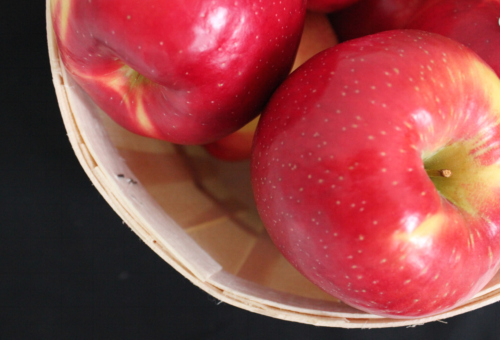
The interior of the Scotian Gold apple processing plant bustles like a New Delhi night market. Horns beep as forklifts fly around corners, laden with wooden boxes filled to the brim with red fruit.
It is clearly harvest season here in Nova Scotia; the plant thrums at a breakneck pace shared by all but the apples themselves, which bob gently in water to avoid bruising as they go through each processing stage.
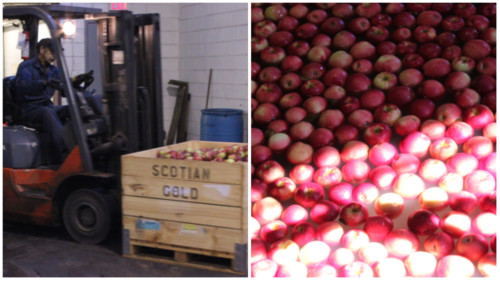
I am being shown around the Scotian Gold plant by Karen Corey, the co-operative’s director of marketing and business development. I am joined by my daughter, Ada, and my parents, who are visiting from Manitoba – they have a seemingly endless stream of questions about Nova Scotia apples.
Thankfully, Karen knows her apples.
Scotian Gold is a co-operative organisation owned by thirty apple growers, and represents 50% of the apple production in Nova Scotia. The co-operative takes care of the business end of apple farming – sorting, packing, and distribution – leaving the farmers to the important work of growing the little red gems.
As we make our way around the plant, I am totally fascinated by the innovative process I witness. The apples arrive in giant crates each stamped with the name of their farm of origin. They begin their journey as each crate is slowly lowered via conveyer belt down into the water.

This apple river floats along and through a space containing a computer that scans each apple and determines, based on size and colour, how they should be sorted.
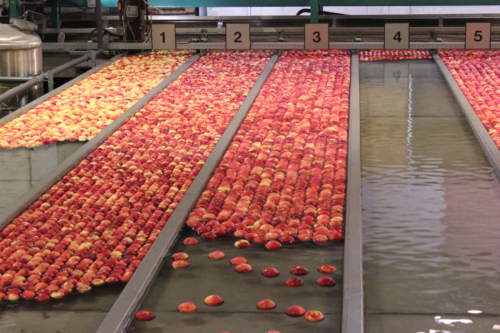
They’re then loaded onto a conveyer which passes perpendicular to thirty separate water tanks. The conveyer is programmed by the computer to drop apples into the correct tank – be it the tank for really large Gravensteins or medium-sized Macintosh’s.
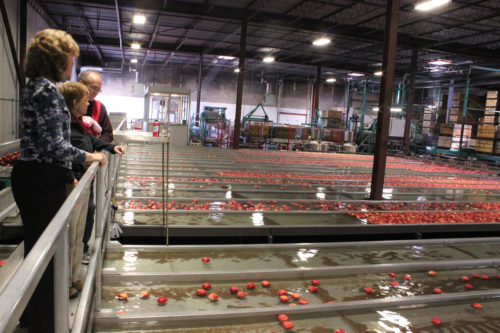
I could’ve watched this all day, but we had to see the CO2 storage units.
What the heck, you say? Because apples are harvested in a very short time frame but are needed in grocery stores year round, some of the fruit needs to be stored. At the plant, they are housed in storage units which are sealed and filled with carbon dioxide. Karen explains to us that the carbon dioxide levels “put the apple to sleep”, slowing its ripening process and allowing them to be processed and distributed at a later time.
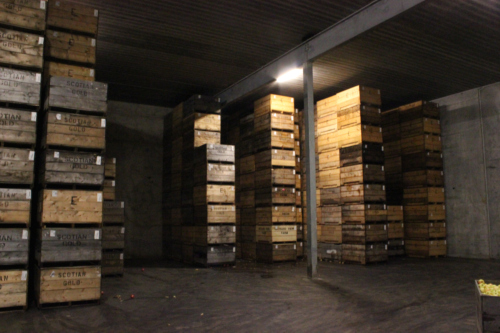
After the hustle of the processing plant, we’re happy to head out into the warm valley sunshine and join Karen at one of the growers’ orchards. We chat with one of the harvesters, and Ada checks out the trees heavy with ripe fruit.
Karen explains that fall in the Annapolis Valley of Nova Scotia, with its warm, sunny days and crisply cool nights, allows apples to stay on the tree longer and become a brilliant red colour. She also animatedly tells us about a new type of Nova Scotia apple being distributed across eastern Canada for the first time this year: the alluringly named SweeTango.
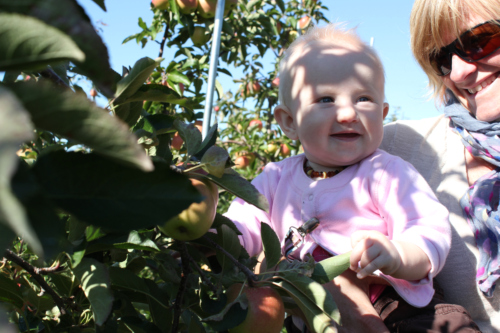
A cross between a Honeycrisp and a Zestar (who names these things?), SweeTango is a sweet apple with a tart note. I can’t wait to taste one, and so we head over to the Scotian Gold Country Store to nab some fruit.
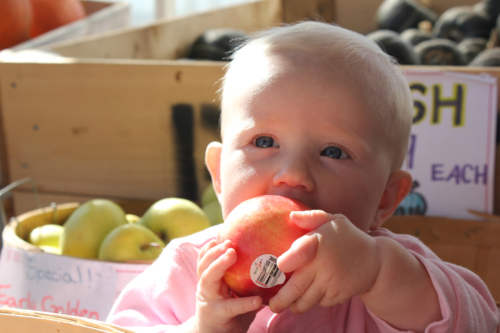
An hour later, the trunk of my Jeep is full of four different varieties of apples as well as some of the products Scotian Gold produces, including packages of apple slices and a very large deep dish pie. I am already filled with anticipation about what I will do with my apples! After setting aside a healthy quantity for eating out-of-hand, I get down to work making apple butter and mulligatawny soup.
Crockpot Apple Butter
For me, apple butter has always been one of those foods that sounded better than it actually was. That is, until I tried this recipe. After a night in the slow cooker, the sugars in the apples had carmelized to a deep golden colour, and my whole house smelled of warm cinnamon. This apple butter is amazing on waffles, pork tenderloin, fresh bread and, as my nine month old daughter can attest, licked off of with one’s fingers and smeared all over one’s face.
What you need:
- 12 Scotian Gold apples, peeled, cored and diced
- 1/2 cup water
- 1/4 cup brown sugar
- 1/2 tsp cinnamon
- 1/2 tsp allspice
Throw all the ingredients in your slow cooker and toss them with your hands until the apples are wearing a coat of cinnamon and spice.
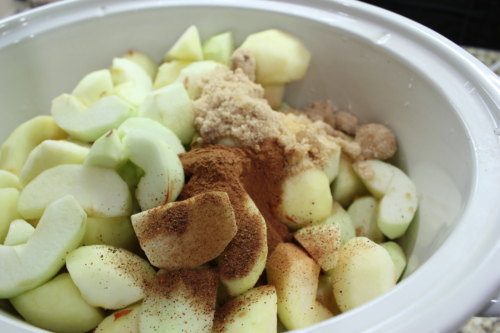
Turn your crockpot on low and let the apples cook at least eight hours or until the apples are a dark brown colour and are nice and mushy. I put this recipe together before bed and let the apples simmer overnight. Combined with the aroma of dark roasted coffee, this makes for an olfactory delight the next morning.
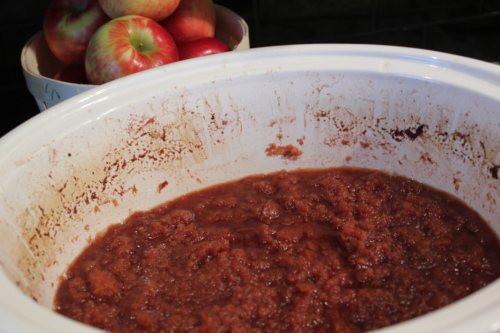
Although unnecessary, I blended the apple butter in my food processor for a smoother final product.
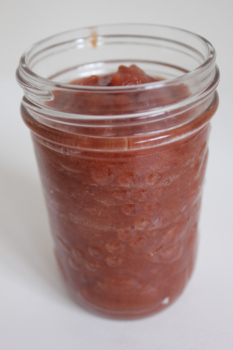
Recipe courtesy of Addison Shaw at changingmydestiny.wordpress.com
Mulligatawny Soup
My dad used to make mulligatawny soup when I was a kid. I think, then, I figured he’d named the soup himself – some silly made-up moniker that might entice my sister and I to eat something with a bit of a different flavour profile than we were used to. Now I know that mulligatawny is actually a legitimate soup name, and this particular recipe brings back memories of my childhood. It’s the perfect fall dish, using a wide variety of harvest produce that can be found locally.
Note: I actually used turkey and turkey broth from our Thanksgiving dinner for this, as well as fresh tomatoes from our garden in place of canned – it turned out really well! Also, I paired it with a bottle of Muscat I picked up from a recent trip to Luckett Vineyards…magnifique!
What you need:
- 3 tbsp butter
- 1/3 cup each carrot (peeled), onion, celery; chopped
- 1 Scotian Gold apple; peeled, cored and chopped
- 1 cup raw chicken; chopped
- 1/3 cup flour
- 5 cups chicken stock
- 1 cup canned tomatoes
- 1/2 tsp ground pepper
- 1 tsp curry powder
- Pinch ground cloves
- Salt to taste
Melt the butter over medium heat in a large soup pot. Add chopped onion, carrot and celery and cook until softened.
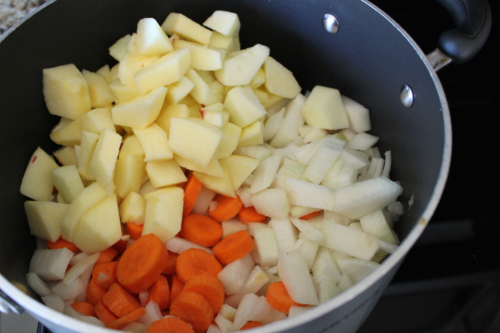
The veggies are then joined by the chopped apple and chicken and continue to cook until the chicken is mostly cooked through. Toss in the flour and stir to coat everything in the pan.
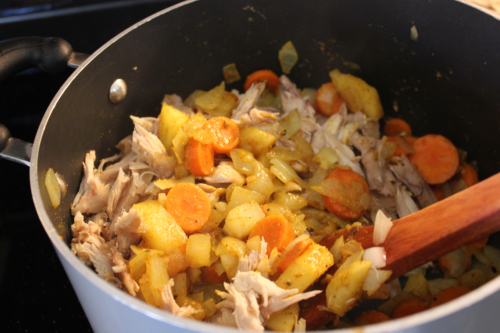
Now pour in your chicken stock and add the tomatoes, stirring well. Add in seasonings and leave the soup to simmer on low heat for an hour.
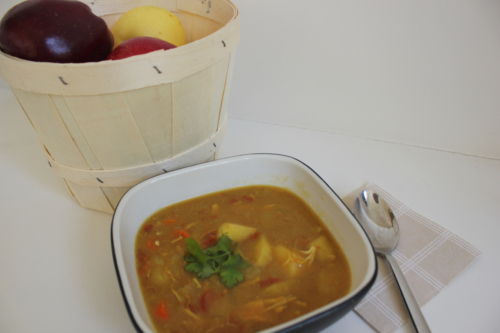
Adapted from Canadian Cookbook, by Nellie Pattinson.

Nice writeup, gotta try the mulligatawny soup soon!